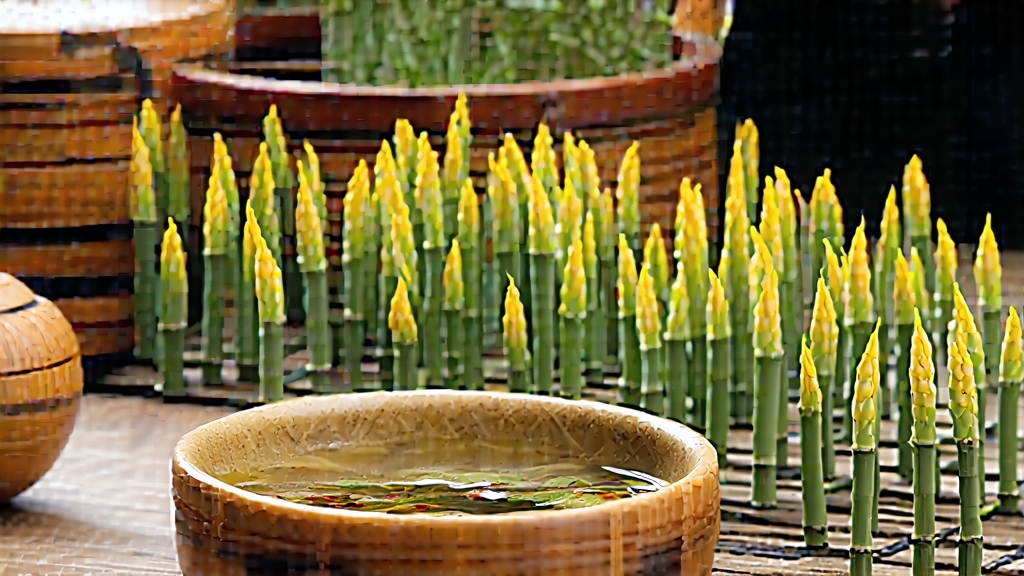
Tucked high on the mist-laden shoulders of Mt. Meng in Sichuan Province, Meng Ding Huang Ya has been quietly perfecting its golden character for more than twelve centuries. To most Western drinkers “yellow tea” is still a blank space on the map, yet this single bud-and-leaf variety once rode the same courier routes that carried Tang-dynasty princesses and Song-era jade seals. Caravans descended the narrow plank roads of the Shu Kingdom, crossed the Min River on bamboo rafts, and pressed north-eastward to Chang’an, where the tiny yellow-green coils were weighed on silver scales and locked into palace treasuries. Emperors prized the liquor’s luminous topaz glow, poets compared its aroma to “first rain on apricot blossoms,” and court physicians prescribed it for “clearing summer heat without chilling the spleen.” Today only a few hundred kilograms leave the mountain each spring, most still hand-carried in wicker back-baskets by the grandchildren of the same families who once fed the imperial appetite.
Meng Ding Huang Ya belongs to the bud-grade branch of China’s yellow-tea family, a category defined not by leaf size but by the obligatory “sealed yellowing” step that nudges chlorophyll toward a mellow straw hue while preserving the amino acids that give yellow tea its hallmark sweetness. Within that family it stands apart from Hunan’s Jun Shan Yin Zhen (picked on a lake island) and Anhui’s Huo Shan Huang Ya (plucked from a north-facing granite slope) because its cultivar—an indigenous Sichuan小叶种 (small-leaf landrace)—has spent centuries adapting to 1,200 m elevations, 85 % relative humidity, and diurnal swings of 15 °C. The bushes sit just below the cloud belt, so every morning they drink condensed fog rather than groundwater, a quirk that concentrates theanine and limits bitter catechins. The result is a tea that can steep four times without astringency, each infusion drifting from orchid to steamed corn milk to faint toasted sesame.
Plucking begins on the first Tuesday after Qing Ming, when the mountain wakes under a dome of peach-pink dawn. Only the “sparrow’s tongue” standard is accepted: an unopened bud pressed tightly against the adjacent leaf, both no longer than 2.5 cm and still cloaked in down that catches the light like frost. Twenty thousand such shoots make one finished kilogram, enough to fill a single gaiwan perhaps thirty times. The pickers—mostly women in indigo headscarves—work from 6 a.m. to 10 a.m., singing call-and-response couplets that echo off the limestone cliffs; after 10 the sun burns off the dew and the leaf temperature rises, pushing enzymes too fast for the subtle yellowing that follows.
Withering happens within two hours of plucking on shallow bamboo trays set in the shade of ancient ginkgo trees. The leaf loses about 10 % moisture, just enough to soften cell walls, while mountain breezes carry away grassy volatiles. Next comes the kill-green, but here yellow tea diverges from green. The leaves are tossed by hand into a cast-iron wok held at 160 °C for exactly 90 seconds—long enough to denature polyphenol oxidase yet short enough to keep the bud spine springy. A quick mechanical fan cools them to 35 °C, after which the crucial “men huang” (sealed yellowing) begins.
Men huang is where science meets ancestral intuition. The partially fixed leaf is piled 8 cm deep inside linen bags, then slid into a pine-wood cabinet whose interior has been pre-warmed to 50 °C by a charcoal brazier. Every 20 minutes the pile is gently turned so that the inner buds—now exhaling moisture—trade places with the cooler outer layer. Over three hours the chlorophyll slowly degrades into pheophytin, catechins dimerize into softer theaflavins, and a faint maillard note of cooked rice husk appears. When the leaf reaches 55 % moisture—judged by the master pressing a bud against his cheek to feel the “tacky velvet” stage—the cabinet is opened and the leaf is rolled.
Rolling is done on a 60-year-old fir-wood board whose surface has been polished by decades of palms. The